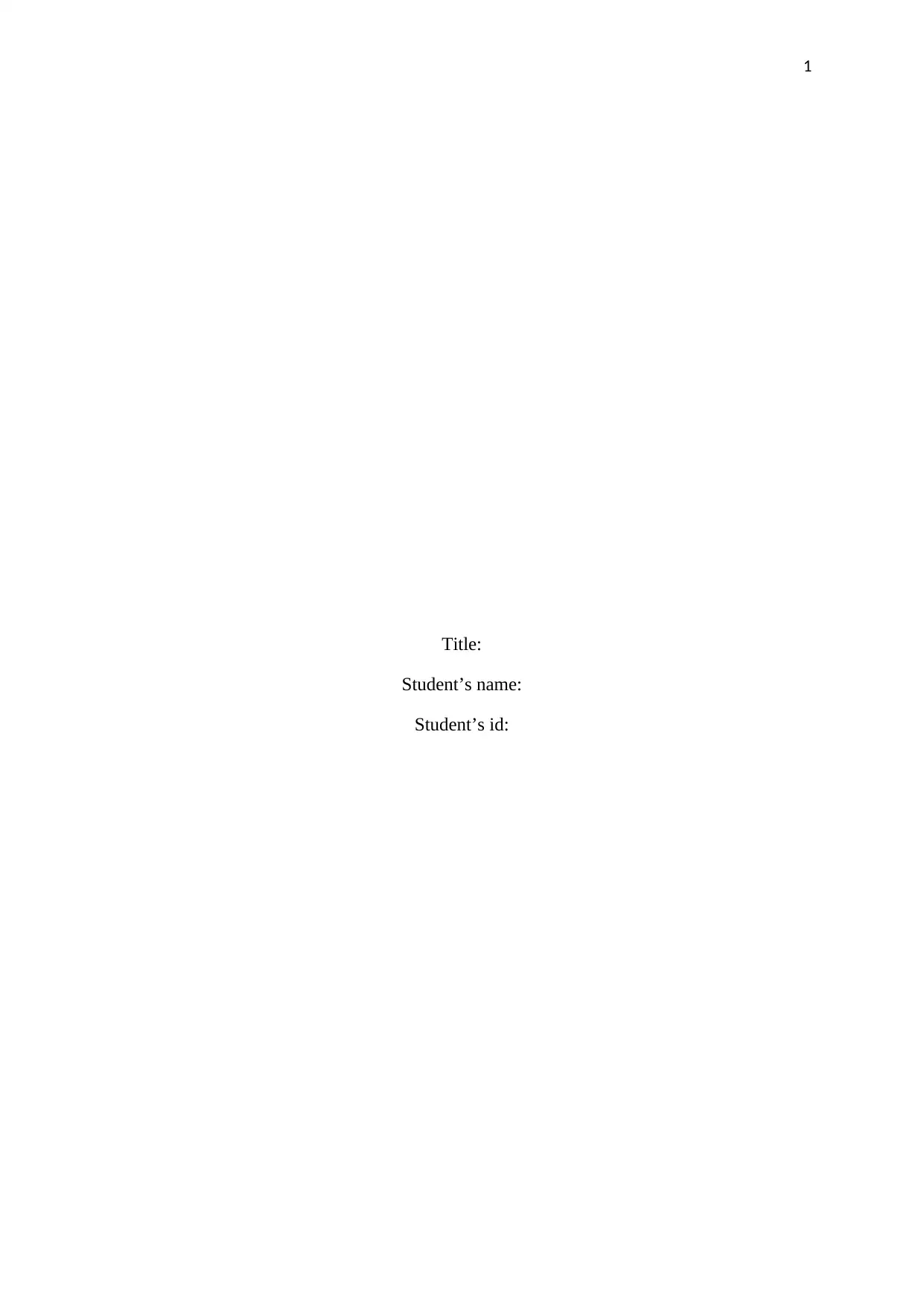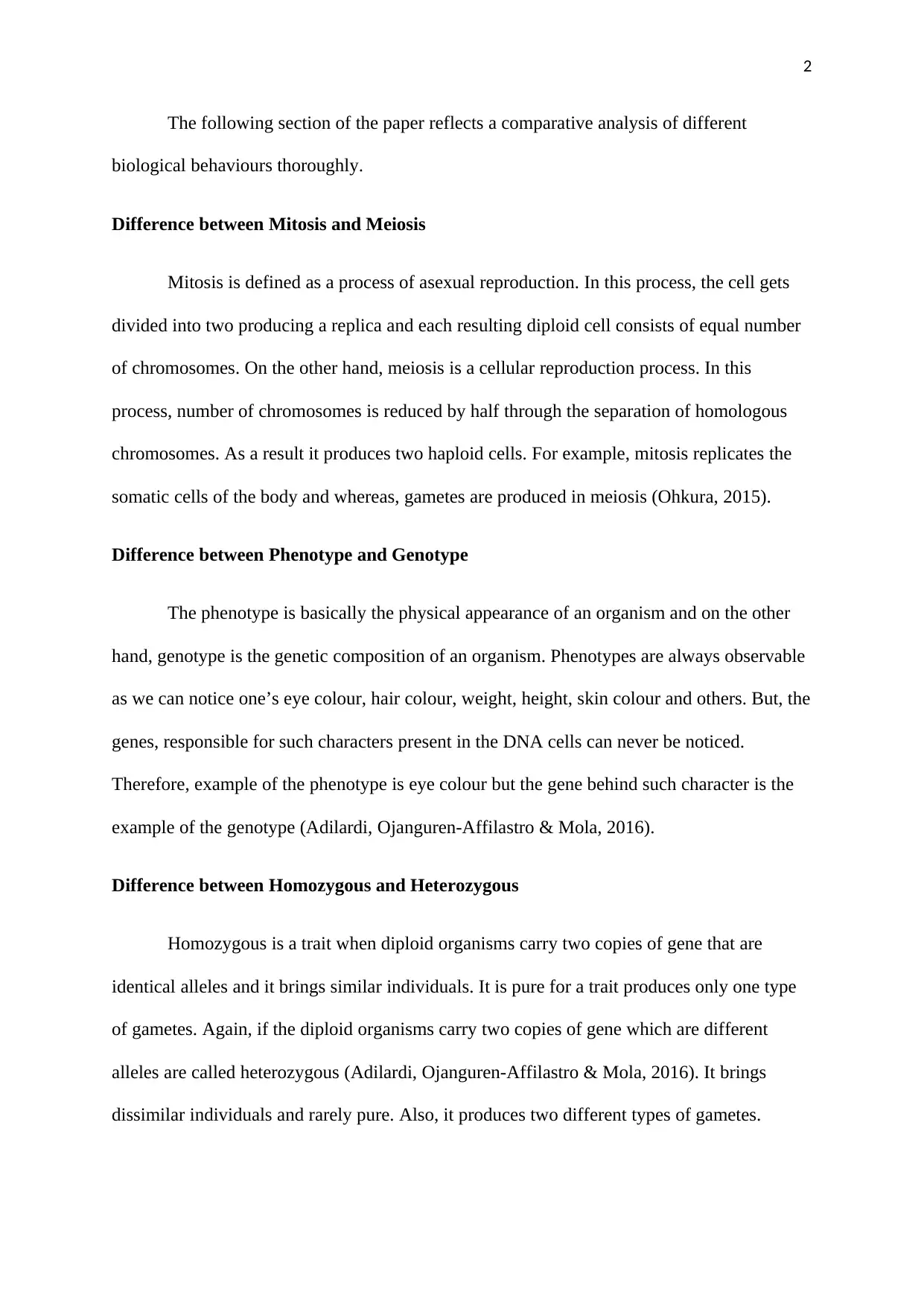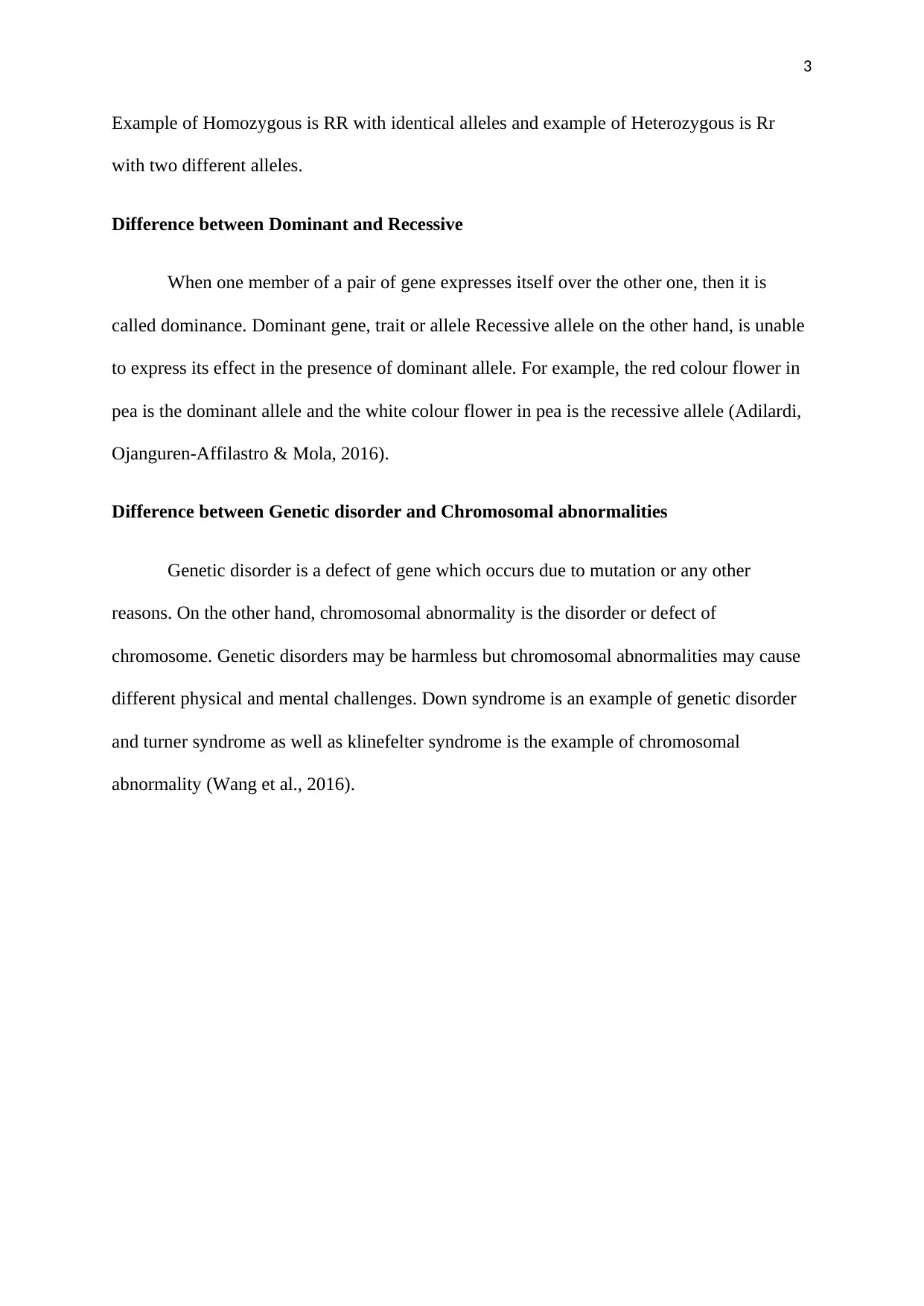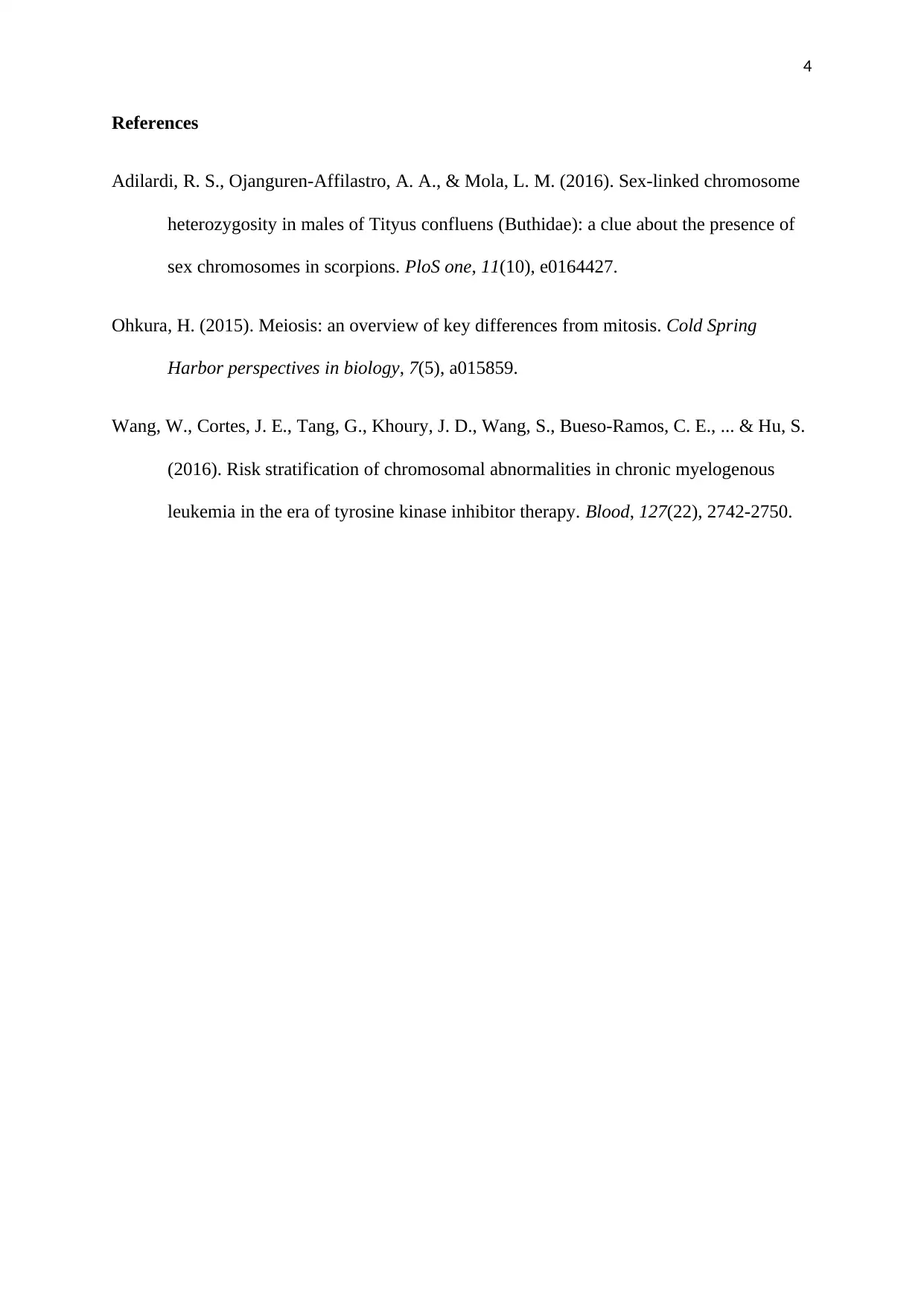Comparative Analysis of Biological Processes in Biology Assignment
VerifiedAdded on 2022/10/06
|4
|663
|101
Homework Assignment
AI Summary
This assignment provides a comparative analysis of several key biological processes and concepts. It begins by differentiating between mitosis and meiosis, highlighting their roles in asexual and sexual reproduction, respectively, and the resulting differences in chromosome numbers. The paper then contrasts phenotype and genotype, explaining how phenotype represents the observable physical traits of an organism, while genotype refers to its underlying genetic composition. Further distinctions are made between homozygous and heterozygous traits, and dominant and recessive alleles. The assignment concludes by exploring the differences between genetic disorders, which stem from gene mutations, and chromosomal abnormalities, which involve defects in chromosomes, illustrating their potential impacts with examples like Down syndrome and Turner syndrome. The assignment is well-structured and includes references to support the information presented.
1 out of 4










![[object Object]](/_next/static/media/star-bottom.7253800d.svg)